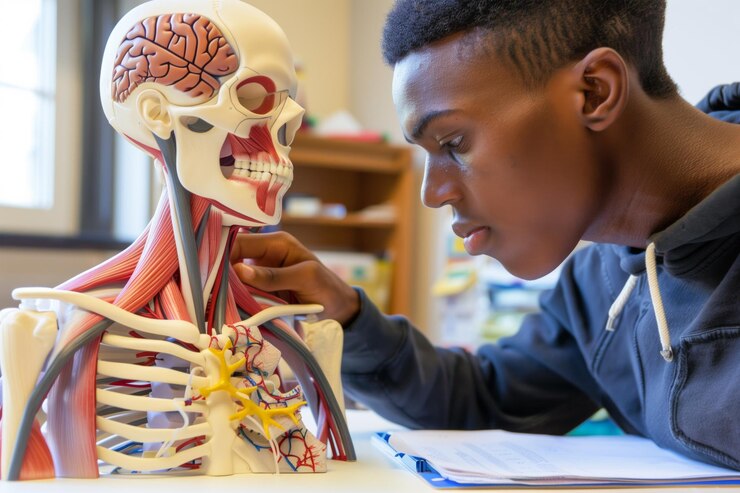
Anatomy and Physiology
Course Description
Anatomy and physiology are two closely related branches of biology that study the human body. Anatomy focuses on the structure of the body, including organs, tissues, and systems, while physiology examines their functions and how they work together to maintain life. Understanding anatomy helps in identifying different parts of the body, from muscles and bones to organs like the heart, lungs, and brain. Physiology, on the other hand, explains how these structures function, such as how the heart pumps blood, how the lungs facilitate breathing, and how the nervous system transmits signals.
These subjects are essential in fields like medicine, healthcare, and fitness, providing the foundation for diagnosing diseases, performing surgeries, and developing treatments. Studying anatomy and physiology also helps in understanding how lifestyle choices, such as diet and exercise, impact bodily functions. From cellular processes to complex organ interactions, anatomy and physiology offer insight into how the body adapts to different conditions, heals from injuries, and fights off infections.
By learning about anatomy and physiology, students, medical professionals, and researchers can better understand the human body's capabilities and limitations, leading to advancements in healthcare and medical science. These subjects are fundamental for anyone interested in health and biological sciences.
Course Curriculum
Mark Davenport
DeveloperI am a web developer with a vast array of knowledge in many different front end and back end languages, responsive frameworks, databases, and best code practices








